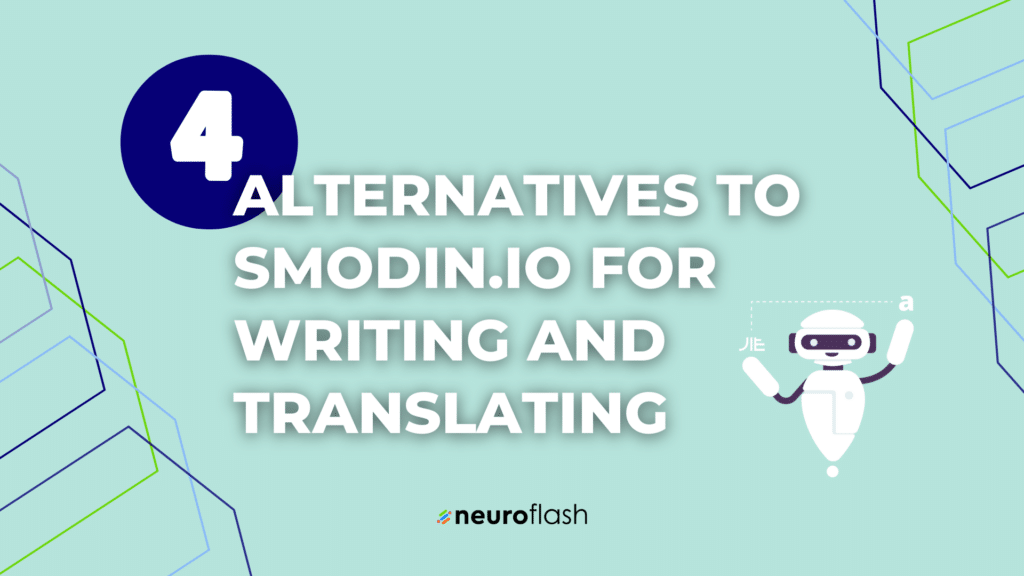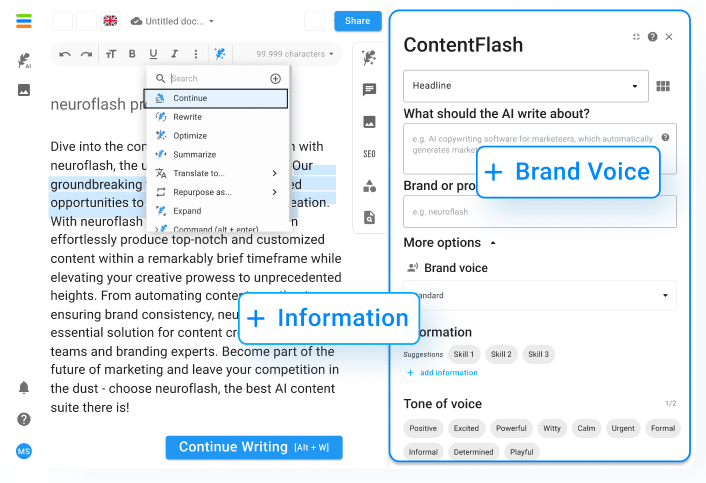Who doesn’t dream of writing their own book one day? But how do you actually proceed once you have the right idea? In this blog post, I’ll show you step-by-step how to turn your idea into an actual book.
About the desire to write a book

Books are a great way to record your thoughts and ideas. It’s no wonder so many people desire to write one. But only a few actually manage to realize this dream. Because it’s not that easy to write good books. It takes a lot of time and effort to hold a finished work in your hands. But it is worth investing the effort. Because anyone who has written a book can be proud of his work. There is something special about having your thoughts and ideas captured in the form of letters and words. And there is hardly anything better than when other people read this book and are thrilled by it.
If you too have this desire within you, you can follow these steps to get started:
1. where do I get a book idea?
A good book idea can come from anywhere. If you’re open to inspiration, you can find an idea around every corner. But where exactly should you look? Here are some possibilities:
In your own life
Recall special experiences or stories you’ve had in your past. These can be the basis for an interesting story.
In the news
Watch current events and look for stories that might inspire you. Maybe there’s something you want to elaborate on.
In books and movies
Other stories can also be a source of inspiration. Look around and see what stories you find interesting and if there might be something you would like to do differently.
With Coastal Intelligence
A new way to quickly get inspiration for possible stories is to use the AI text generator neuroflash. This one will give you different suggestions for possible actions in seconds, from which you can gather new ideas:

Register for free and get new ideas for your future book!
Once you have an idea, it’s important to elaborate on it. Take your time to develop the idea and find out if it really is enough for a whole book. Make sure there is enough conflict and suspense to keep readers entertained until the end of the book. If all goes well, you’ll soon have the first draft of your book ready!
2. what kind of book do you want to write?
There are so many different types of books that it can be hard to choose. Should it be a non-fiction book, a novel, or maybe even a book of poetry? Before you get into the actual writing process, it’s important to be clear about the nature of your book.
A good way to figure out what kind of book you want to write is to look at a list of the different kinds of books and then figure out which one fits your story best. Here are some of the most popular types of books:
Nonfiction
A nonfiction book is usually informative and deals with a specific topic. It can be both educational and entertaining and is often written by experts in the field.
Roman
A novel is usually a fictional story written in prose form. Novels can fall into different genres, for example, romance novels, crime novels, or fantasy stories.
Poetry book
A book of poems is just that – a collection of poems. Often the poems in a book of poetry are thematically linked or it is the work of a particular poet.
3. decide on a topic
Before you can get down to the actual writing process, you first need to decide what the theme of your book should be. This may sound easier than it is, because there are endless possibilities. The best way to start is to make a list of possible topics and then take a closer look at which one suits you best.
For example, if you want to write a cookbook, you should think about what kind of cookbook it should be. Want a cookbook with your favorite recipes? Or would you like a cookbook with delicious and easy recipes for every day? Maybe you have special dietary needs and want to write a cookbook for vegans or vegetarians? Once you’ve decided on a topic, you can move on to the next step.
Inform yourself thoroughly about the topic
Before you start writing, you should thoroughly research the topic. With our cookbook example, you should be well versed and familiar with it. Not only does this mean you should try recipes, but it also means you need to be familiar with the different ingredients and techniques. The more knowledge you have about the subject, the better the result will be.
Find out what your readers really want to know
Once you know what you want to write about, it’s time to find out what your readers really want to know. To do this, you need to put yourself in your readers’ shoes and think about what they want from your book. For example, do you want to teach them how to cook healthy food? Or do you want to show them how to make delicious dishes? Maybe they would like to learn something about the background of the topic? Once you know what your readers want to know, you can move on to the next step.
Find out what interests you about the topic
You now have a list of potentially interesting topics in front of you and you also already know roughly what your readers want to know. Now it’s time to figure out which of these topics interests you the most. Because only if the topic interests you yourself will you be able to write a good book about it. So think carefully about which of the topics appeals to you most and then get to work!
4. what is your concept?
A good concept is the basis for a successful book. So before you start writing, you should think about how it should look and what message it should convey. A good way to develop your concept is to ask yourself a series of questions:
- What goal do I want to achieve?
- What story do I want to tell?
- How can I craft my story to be compelling and entertaining?
- What tone do I want to strike in my book?
- How can I make sure my book meets my readers’ expectations?
If you answer these questions for yourself, you have already laid a solid foundation for your concept. From there, you can add more details and keep developing your story.
5. determine structure and plot

A book has a certain structure consisting of a prologue, a main part and an epilogue. The prologue gives the reader an insight into the plot and background of the story. The main part is the actual content of the book, in which the plot progresses. And the epilogue offers the reader the opportunity to reflect on the plot once again.
So before you start writing, you should think about the structure and plot of your book. For example, you can take notes or create a mind map. That way, you’ll have an overview of everything that’s going to be in your book, and you’ll be able to better orient yourself as you write.
Also, always keep the thread of your story in mind. Always ask yourself the question: Why should the reader read my book? What makes my story so special and interesting? If you can answer these questions, you will also not lose the thread in your story and will be able to tell it convincingly.
6. develop the characters
The main character in your book should fascinate you and you should know them well. If you’re writing a story about a mad scientist, you need to know what makes him tick. What is his past? What are his goals? How does he think and act? The better you know your character, the more alive they will be in your book.
The supporting characters are equally important. They should also be interesting and well elaborated. If you have an evil antagonist, you should also know why he is evil. A good villain is more than just a bad guy, he has a motivation and a personality.
Some authors plan their characters in detail before they start writing. They develop background stories and drawings of the characters. Others let the characters emerge only in the course of writing and develop them spontaneously. Both methods have advantages and disadvantages. The only important thing is that you take enough time to develop your characters and that they seem authentic.
7. choose a narrative perspective
The next step in writing a book is choosing a narrative perspective. Narrative perspective is the way the story is told. The most common narrative perspectives are first person and third person.
First person is the most personal narrative perspective because the story is told from the point of view of a single person. In this perspective, the reader can dive deep into the thoughts and feelings of the main character.
The third person is a more objective narrative perspective. It uses the “he” or “she” form and is written either from the point of view of a specific character or an omniscient narrator. In the first case, the reader experiences the events, similar to the first person, only from the point of view of the narrating character and thus experiences only his feelings. In the case of the omniscient narrator, the reader has access to the thoughts and feelings of all the characters in the story.
Which narrative perspective you choose depends on your preferences. Each perspective has its advantages and disadvantages. It’s best to experiment with all of them to see which one works best for you.
8. think of a book title
A good title is like a call sign. It should be meaningful and interesting so that it catches the reader’s attention. Therefore, think carefully about what title you want to give your book. Make sure the title fits the content and mood. Some tips for choosing a good book title:
- Creativity is key: a creative or unusual title will grab the reader’s attention.
- Conciseness is important: The title should be short and concise so that it is easy to remember.
- Matching the content: The title should reveal something about the content of the book.
- Meaningful: The title should arouse interest and make you curious for more.
If you just can’t think of a good title, you can also use neuroflash for this. All you have to do is provide information about the content of your book in a short briefing. The AI then generates various suggestions for interesting book titles:

You can try it out yourself here! Maybe you have the right idea?
9. analyze the competition
You set a goal and know how to achieve it. Now it’s time to analyze your competition’s writing style to figure out how you can best position yourself. To do this, you should ask yourself the following questions:
- What topics do the other authors cover?
- What is your writing style?
- How can I stand out from them?
The answers to these questions will help you set the right tone for your book and advance your positioning.
Before you start writing, however, you can watch the following video to get an idea of what is important when writing a book:
10. the writing process
Now that you have the idea for your book, it’s time to start the writing process. This process can vary from person to person, but there are some general steps you can take to get your book written.
Find a place and time when you are most productive
Whether it’s early morning or late night, figure out when you can write best and commit to it. If you are able to write regularly at the same time, it will help you get into the writing flow.
Familiarize yourself with the basic structure of your book
Whether it’s a plot or a collection of thoughts, you have a general concept of what you want your book to contain. This will help you keep the thread of your writing and avoid going off topic.
Start writing
It’s not necessary to be perfect – just start writing and let the rest follow. Once you get into the flow of writing, the words will flow all by themselves. Remember that it is always possible to change or add something later.
Get around writer's block with AI
Of course, writing a book is not always easy. You may even be experiencing the infamous writer’s block. However, if that happens, you can stay relaxed and face it with neuroflash. Because if you don’t get to a point, the “magic pen” simply continues writing your story and helps you get going:

Who knows? Maybe this will give you a new direction for your plot or give you an idea for an exciting turning point? If you’re treading water, just register for free at neuroflash.
Take time for revision
Once the first draft of your book is finished, you should revise and improve it. Look for spelling and grammatical errors as well as logical inconsistencies or gaps in the plot. This is also a great opportunity to make sure your book is as good as it can be – so take advantage of it!
11. get feedback
It’s time to share what you’ve written and solicit feedback. For that, you can turn to friends, family, or even a writing group. The initial reactions to your book are important to see if you are on the right track. However, it is advisable to get not only one opinion, but as many as possible. This way you can get a full picture and decide what changes are needed.
12. publish your book
After you’ve written your book, it’s time to present it to the world. You have several options for this. You can publish it yourself or hire a publisher to do it for you. Both have advantages and disadvantages that you should weigh.
Self-published
When you self-publish your book, you have complete flexibility. You decide when it appears and you can also make changes at any time. However, you also have to take care of the marketing yourself and bear the risk that you do not achieve the hoped-for success.
Publisher
If you choose a publisher, they will take care of marketing the book and you won’t have to worry about anything. However, you have less control over the publishing process and must adhere to the publisher’s specifications.
Want to self-publish your book? To help you get the most out of it, here’s a guide to digital marketing.
For more tips on writing books, check out this article.
Frequently asked questions & answers
How do I start writing a book?
First, you should think about what story you want to tell. Then you make a plan for your book and start writing.
How should I design my book?
You can design your book the way you want. The only important thing is that the content is well structured and offers the reader added value.
How long does it take to write a book?
It all depends. Some books are written in a few weeks, others take years.
Useful tips
- Find an appropriate topic for your book: think about the story you want to tell and whether there is a genre that fits that story.
- Plan your story: write a short summary of the content and think about how the individual scenes and chapters should be structured. An exposé can be helpful here.
- Start writing the text: Start with the first scene and keep writing until you reach the end. Make sure that the raw text is not perfect yet – you can always change and improve it later.
- Have others read the text and get feedback: this will give you valuable feedback on the structure and content of your story.
- Revise the text based on the feedback and get it ready for publication or printing: for this, you need to proofread it again and possibly revise it again.
As you can see, it’s not that hard to write a book. All you need is a good idea, some perseverance and a little talent. If you follow these tips, you will soon have created your own masterpiece.






















